At Consource.io, we believe that managing projects efficiently is one of the key success factors for capturing the full impact of your investment. You can do everything right—allocate your resources to the best projects, select the right consultants, and negotiate the perfect terms and conditions—but if you don’t manage your projects properly, none of those matters. And here’s the kicker: the closure is just as important as the start—if not more! 😄
Wrapping up a consulting project is your chance to ensure long-term success, protect your investment, and strengthen your relationship with your consultant for future opportunities. In this guide, we’ll walk you through everything you need to know to wrap up your project like a pro and set your team up for sustainable success.
If you’re new to consulting project management, before we dive in, you might want to check out our guide on Efficiently Managing Consulting Projects: 10 Proven Strategies for Success to get a solid foundation on managing projects from start to finish.

1. The Importance of Wrapping Up a Consulting Project
Wrapping up a consulting project isn’t just about signing off on the final deliverable and saying goodbye—it’s about maximizing the value of your investment and setting the stage for continued success. Done well, a project closeout can solidify everything you’ve gained during the engagement and even open doors to future opportunities.
Here’s the truth: if you’re not putting as much thought into wrapping up a consulting project as you did start the project, you’re leaving money on the table. A well-planned closure ensures the knowledge transfer is seamless, your team feels empowered to move forward, and the consulting relationship remains strong for potential future engagements. Neglecting this step could mean that hard-earned insights and improvements fall through the cracks.
Why a Successful Wrap-Up Is Crucial
First, a strong wrap-up establishes long-term returns. It’s easy to get caught up in the excitement of “we’re done!” but without careful transition and follow-through, the project’s benefits could fade away just as fast as they arrived. Done correctly, the wrap-up ensures that the tools, systems, and strategies implemented deliver results well beyond the final meeting.
Second, it protects the investment you made in bringing in consultants. You hired them to solve a specific issue, but the success of their work largely depends on how well the transition is managed after they leave. Whether it’s ensuring proper knowledge transfer, implementation, or financial closure, every element contributes to long-term success.
2. Preparing for a Smooth Transition After Project Completion
Consulting engagements are like relay races: success depends on a smooth handoff. From the very start, you should be thinking about how to wrap things up when the project concludes. That means planning for a seamless transition from the RFP (Request for Proposal) stage through to project delivery—and beyond.
Planning from Day One
Most companies view the RFP process as the start of their project, but the savviest clients see it as the beginning of a long-term relationship. Your RFP should include clauses about how success will be measured and what will happen after the final deliverable is submitted. This forward-thinking approach helps avoid awkward post-project handovers where teams feel uncertain about how to move forward.
Here’s a pro tip: Treat post-project sustainability as part of your initial contract negotiations. Whether it’s formalizing a follow-up visit or planning for an extended support period, addressing these details from the outset sets clear expectations and keeps both parties accountable.
Collect Data Like Your Success Depends on It—Because It Does
You’ve probably heard the old adage, “You can’t improve what you don’t measure.” Well, it applies here too. Throughout the project, make sure you’re collecting data points that will help evaluate the project’s impact—whether that’s operational improvements, financial gains, or customer satisfaction scores.
This data is essential not only for determining if the consultant delivered as promised but also for guiding the next steps after the project wraps. Are there areas that need tweaking? Are there any unexpected challenges that emerged? Good data will give you the insights to answer these questions confidently.
Here’s where the real magic happens: by building in follow-up checkpoints, you can continue gathering data three, six, or even 12 months post-project. This ensures that the improvements stick and helps identify any new areas where consulting support might be needed.
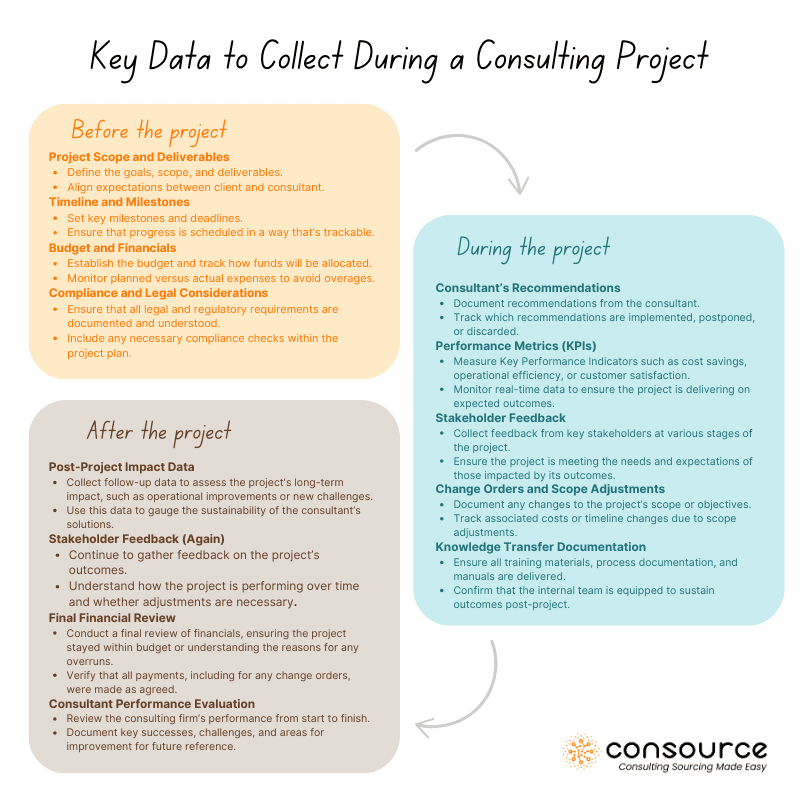
3. Evaluating and Selecting Consultant Recommendations
Now, this is where things get interesting. Just because your consultant hands over a list of recommendations doesn’t mean you have to implement them all immediately (or at all).
The Art of Sifting Through Recommendations
It’s tempting to see the consultant’s final report as a to-do list, but the smartest clients know that selective implementation is key. As a business, you need to weigh each recommendation against your resources, strategic goals, and internal capabilities. Maybe the consultant’s idea for streamlining operations is perfect, but their suggestion to invest in new technology is too ambitious right now.
Meet with your senior leadership team to sift through the recommendations and identify what’s immediately actionable and what can be part of a longer-term plan. Once you’ve sorted the wheat from the chaff, regroup with the consultant to get their feedback. They’ve likely seen what happens when companies choose option A over B and can offer valuable insights into potential pitfalls you might not have considered.
Here’s a little secret: consultants love it when you challenge their thinking. So don’t be afraid to ask, “What happens if we don’t go with this option?” or “How have other companies handled this situation?” This ensures you make the most informed decision possible.

4. Ensuring Effective Knowledge Transfer and Skill Retention
So, the consulting project is wrapping up, and your consultant is on their way out the door. Before they go, you need to ensure that all the knowledge they’ve imparted doesn’t walk out with them. This is where effective knowledge transfer comes into play—it’s the difference between a one-time fix and a long-term solution.
The What, the How, and the Who
Let’s break this down into a simple formula: What needs to be done, how it will be done, and who will be responsible for doing it. Without clear answers to these three questions, even the most brilliant strategy will struggle to take flight once the consultant leaves.
Make sure your team is crystal clear on the “what” and “how” of the project. It’s not enough for them to understand the high-level concepts—they need to be able to apply these concepts in their day-to-day roles. You’d be surprised how often businesses skip this step, assuming everyone’s on the same page. (Spoiler alert: they’re not.)
One more thing: accountability. Assign specific individuals to take ownership of the implementation process. It’s easy for things to get lost in the shuffle if no one feels responsible for pushing them forward. By designating clear owners, you can ensure that the project continues to make progress long after the consultant has finished their work.
Keeping Knowledge Alive
Consulting projects can introduce new systems, processes, and skills, but what happens when your star employee leaves or key team members go on vacation? Without a solid plan, all that shiny new knowledge can quickly fall through the cracks.
To prevent this, you’ll need a strategy for retaining and refreshing the skills your team has learned. This might include periodic training sessions, refresher courses, or even online resources that employees can access at any time. A mentorship program can also be a great way to ensure that new team members are brought up to speed on best practices as the company grows.
Remember, knowledge transfer isn’t a one-and-done deal—it requires ongoing attention. By regularly reinforcing what your team has learned, you’ll maximize the ROI on your consulting investment and ensure that the benefits last well beyond the project’s end date.
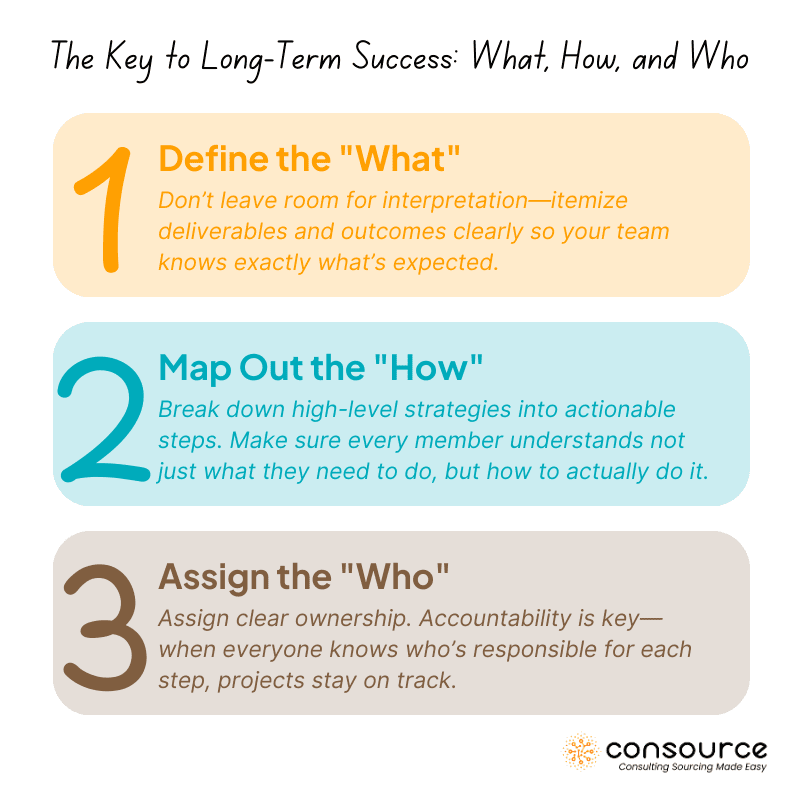
5. Fostering Ongoing Innovation and Relationship with the Consultant
Here’s a thought: just because the project is over doesn’t mean the relationship has to be. In fact, some of the best consulting insights come after the project is done, when both sides have had time to reflect on what worked—and what didn’t.
Keep the Door Open for Big Ideas
Have you ever noticed that some of your best ideas come after the fact? Maybe it’s a few weeks or months down the line when something clicks, and you suddenly see a new possibility or improvement that wasn’t obvious during the project. That’s why it’s smart to keep the door open for ongoing discussions with your consultant.
You never know when a “lightbulb” moment might strike—whether it’s from your side or theirs. Encourage open communication with the consultant after the project ends. This could take the form of occasional check-ins, brainstorming sessions, or even an annual review meeting to discuss emerging challenges or opportunities.
Build a Partnership, not a Transaction
It’s easy to view consulting projects as one-off engagements, but the smartest companies approach them as long-term partnerships. After all, your consultant has gained a deep understanding of your business, its challenges, and its opportunities. Why not leverage that knowledge for future initiatives?
By building a strong, collaborative relationship, you can continue to benefit from their insights and expertise, even after the initial project wraps up. Whether it’s future consulting engagements or just bouncing around new ideas, fostering this relationship can give your business a competitive edge.

6. Tracking the Performance of the Consulting Firm
You wouldn’t buy a new car without checking the reviews, right? Well, the same logic applies to consulting firms. Throughout the project, you should be keeping a close eye on how the consulting team is performing—so that by the end, you can make an informed judgment about their overall effectiveness.
Measure What Matters
To get the most out of a consulting engagement, it’s essential to measure what really matters—in other words, what you should expect from a project. If you’re looking for a head start, here’s the methodology we use at Consource to evaluate consulting performance across five key categories:
- Commercial Approach: After the RFP process, give yourself time to reflect: Was the proposal well-structured and aligned with your needs? Even if you don’t select them, provide feedback on their approach. This will refine future proposals and help you set clearer expectations next time.
- Delivery: Evaluate both project management and deliverables. Did the consulting firm stick to the budget and timelines? Were their deliverables both high in quality and actionable? Look for gaps between what was promised and what was actually delivered.
- Talent & Expertise: Did the team bring the expertise and seniority they promised? Make sure their knowledge and methodologies matched the complexity of your business challenges, and that they delivered real, impactful insights.
- Behaviour: Consider how they conducted themselves. Were they transparent, honest, and trustworthy throughout the engagement? Did they listen to you? Behaviour matters—especially when building long-term partnerships.
- Impact: Finally, assess the project’s lasting value. Did they transfer knowledge effectively? Are your internal teams now better equipped to manage and sustain the changes? Ensure the project delivered measurable results and value for money.
For more insights on building strong, trusting relationships with consultants, check out The Crucial Role of Trust in Client-Consultant Dynamics – Essential Know-Hows for Clients.
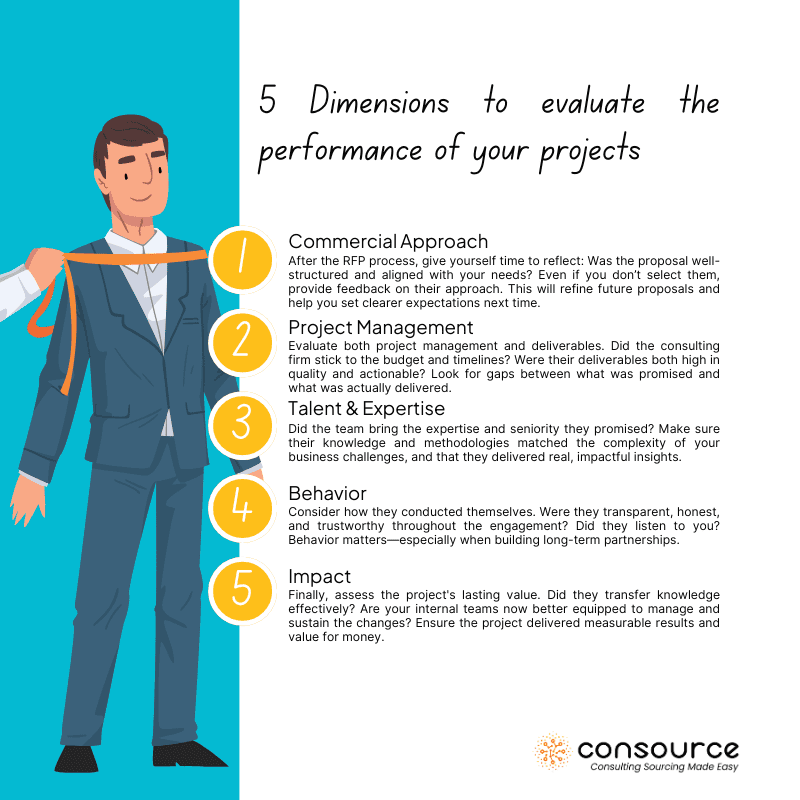
Why Keeping a Record is Essential
It’s important to maintain thorough documentation of your consulting engagements, not just to share constructive feedback with the consulting firm, but also to protect your business in case of future disputes or litigation. By keeping a record of each stage of the project, from the initial proposal to final deliverables, you’ll have a clear paper trail that supports your evaluation.
In addition, standardized evaluations are crucial for comparing consultants across different projects. By using consistent criteria, you can objectively measure how well each firm performs, ensuring you select the right partner for future engagements. Ultimately, the most meaningful evaluations happen at the project level—because that’s where real impact and value are determined.
7. Post-Project Follow-Up and Maintenance
The project’s done, the consultant has gone home, and your team is running with the changes. Time to sit back and relax, right? Not so fast. Just because the project is over doesn’t mean you can take your foot off the gas. In fact, the follow-up phase is one of the most critical periods for ensuring that the changes stick and that the investment in consulting pays off.
Develop a Post-Project Support Strategy
A great way to ensure your project’s long-term success is to develop a post-project support plan. This could include scheduling regular check-ins with your consultant for troubleshooting and guidance, or even retaining them on a limited basis for ongoing support.
Having access to the consultant during this phase can be incredibly valuable, especially if unexpected challenges arise as the new systems or processes are implemented. Consider building a post-project retainer into your contract or negotiating for a few additional follow-up sessions after the main project concludes.
Monitoring and Tweaking Performance
No system is perfect from day one, and consulting projects are no exception. As your team begins implementing the consultant’s recommendations, there may be areas that need fine-tuning or adjustments. This is where ongoing performance monitoring comes into play.
Make sure you’re keeping an eye on key metrics, whether they’re financial improvements, operational efficiencies, or employee satisfaction. Regular performance reviews will help you spot any issues early and address them before they become bigger problems.
By staying proactive and keeping the lines of communication open, you’ll ensure that the improvements last long after the consulting project is in the rearview mirror.

Conclusion: Wrapping Up Is Just the Beginning
By now, we hope we’ve convinced you that wrapping up a consulting project is just as critical as kicking it off. If you’ve followed the steps we’ve outlined, you’re well on your way to ensuring the value you’ve gained from the consulting engagement doesn’t vanish once the consultant walks out the door.
At Consource.io, we’ve built our platform with this very goal in mind—helping you manage your consulting projects from start to finish. Our platform allows clients to handle everything from RFPs to Statements of Work (SOW) and seamlessly manage the entire project lifecycle. With real-time collaboration, shared workspaces, and tools to track milestones, payments, and critical deliverables, Consource makes sure nothing is left behind.
Let’s face it—everyone’s had a moment of frustration with consultants, right? 😄 But the truth is, managing a consulting project effectively requires effort on both sides. When clients stay organized, set clear expectations, and actively manage the process, the results are transformative. So, before you get frustrated with consultants, ensure your project gets the attention it deserves from start to project closure.
If you’re tired of chasing consultants for deliverables or dealing with project management chaos, book a demo with Consource.io today! Let us show you how our platform can help you not only manage your consulting projects more effectively but also ensure a smooth and successful consulting project wrap-up. Because when both sides work in harmony, consulting projects become the powerful change agents they’re meant to be.
Frequently Asked Questions
1. How should clients manage the final stages of a consulting project?
The final stages of a consulting project should involve a detailed review of deliverables, a comprehensive knowledge transfer, and a clear plan for post-project follow-up to ensure long-term success.
2. What steps should be taken to ensure knowledge retention?
Clients should implement formal training sessions, set up mentorship programs, and create accessible documentation to ensure that knowledge transfer is both comprehensive and sustainable.
3. Why is feedback important in wrapping up a project?
Feedback allows both the consultant and the client to reflect on the project’s successes and areas for improvement. This not only ensures continuous improvement but also strengthens the client-consultant relationship for future engagements.
4. How can clients assess the consulting firm’s performance?
Clients should track performance against key milestones and deliverables, maintain clear records of communication and problem-solving, and evaluate the consultant’s ability to adapt to challenges throughout the project.
5. What are the best practices for post-project follow-up?
Clients should establish a post-project support plan, keep communication lines open with the consultant, and regularly review performance metrics to ensure the project’s outcomes are sustainable.
6. What role should innovation play in post-project planning?
Innovation should be encouraged even after the project’s completion. By fostering a relationship that allows for ongoing idea-sharing, clients can capture fresh insights that may arise after the project’s end.

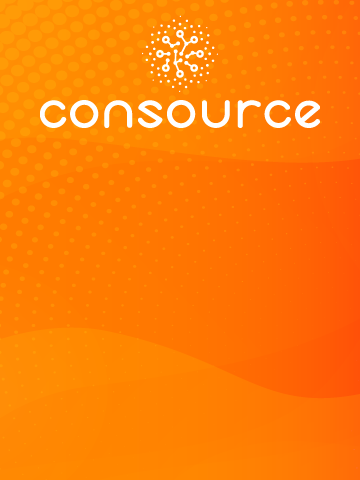



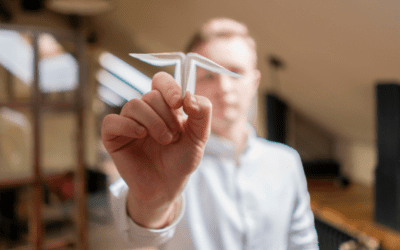


0 Comments